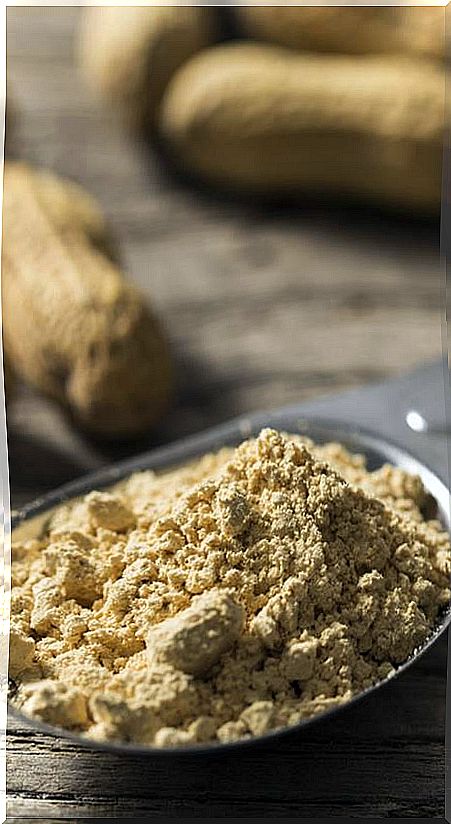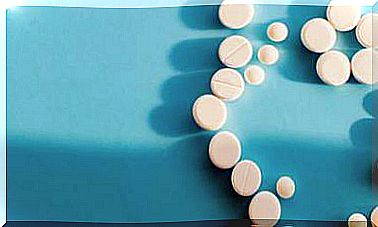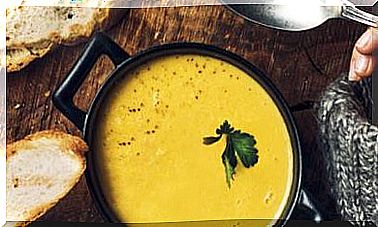What Is Defatted Peanut Flour And What Is It For?
Defatted peanut flour or powder is a new food that can be used as a protein supplement in the framework of a balanced and healthy plant-based diet. We explain its properties and how to use it in the kitchen.

There is a demand for protein products that brings new foods to the market, such as defatted peanut flour. This concentrated product can complement the protein intake in the vegetarian diet, along with legumes, cereals, nuts and seeds.
By removing the fat, defatted peanut flour is much lower in calories than peanut butter or whole peanuts. If in peanut butter the proportion of fat is 45-50%, in flour it is reduced to 10-15%. In contrast, proteins are increased from 30% to almost 50%.
The “defatted” flour actually preserves a percentage of fat, which is mainly of the monounsaturated type, like that of olive oil, and therefore it is healthy if consumed in moderate doses in the context of a balanced diet.
On the other hand, as a plant food that it is, it does not contain cholesterol.
Is peanut flour a natural food?
There are defatted peanut flours of different qualities, but you can find those that are only composed, 100%, of defatted flour, without sugars, sweeteners, salt, additives or other components.
To make it, only roasted peanuts are used that are cold pressed to separate the fat.
Is it beneficial for health?
The general recommendation of nutritionists is to consume 3 to 7 servings (of about 30 g) of nuts a week, but in the vegetarian or vegan diet this amount can be increased since these foods are sources of vegetable proteins.
We can compare eating defatted peanut flour to eating a serving of whole peanuts.
Whole peanuts (30 g):
- 160 calories
- 7.3 g protein
- 14 g fat
- 6 g of carbohydrates
- 2.4 g fiber
Defatted peanut protein flour (30 g)
- 124 calories
- 14g protein
- 4 g fat
- 5 g of carbohydrates
- 4 g of fiber
As you can see, peanut flour allows you to reduce the amount of calories and double the protein, with a good amount of fiber and few carbohydrates.
With abundant minerals and vitamins
In addition, the defatted peanut flour is rich in minerals and vitamins. According to the United States Department of Agriculture database, 28 g of defatted peanut flour contains:
- 4 mg of manganese (69% of the RDA)
- 105 mg magnesium (25%)
- 215 mg phosphorus (17%)
- 45 mg zinc (13%)
- 366 mg potassium (8%)
- 40 mg calcium (4%)
- 6 mg iron (3%)
- 6 mg of vitamin B3 (38% of the daily value)
- 4 mcg of folic acid (17%)
- 2 mg of vitamin B1 (13%)
- 1 mg of vitamin B2 (8%)
- 8 mg of pantothenic acid (B5) (8%)
- 1 mg of vitamin B6 (7%)
However, the good nutritional profile of peanut flour is not a sufficient reason to consider it a healthier food than whole peanuts.
Peanuts, for example, provide vitamin E and probably other fat-soluble substances that are lost by removing much of the fat.
As a general recommendation, most nutritionists agree that the diet should consist mainly of whole natural foods, with a complementary presence of some simple and traditional preparations, such as olive oil or fermented ones.
In any case, if you are looking for a protein supplement, defatted peanut flour, consumed in moderation, is a better option than products that incorporate additives.
Beware of possible contaminants
Peanut flour could be part of these healthy processed products, as long as it is free of contaminants that may have been generated during production.
In this sense, it would be very important to know if solvents have been used, in addition to mechanical pressure, to separate the fats. If chemicals are used, there is a risk that residues will remain in the final product.
On the other hand, roasting peanuts also involves the generation of acrylamides and advanced glycation products that can have carcinogenic effects.
To learn more about acrylamides you can read: What can you do to reduce acrylamide in your dishes
In order to reduce risks, it is advisable to choose the lighter colored flour among those available (the tone indicates the degree of toasting) and the one that has a certificate of organic production.
How do you use defatted peanut flour?
Manufacturers recommend a serving of 10 g (about 3 tablespoons for dessert). This amount can be consumed in many ways:
- You can dissolve it in a glass of oat milk or any other vegetable milk. It is very well diluted and the taste is pleasant.
- It can be added to yogurt or vegetable smoothies.
- It can be mixed with cereal flours to make pastries.
- It can also be added to other preparations such as energy bars, sauces, creams, batters and desserts.








